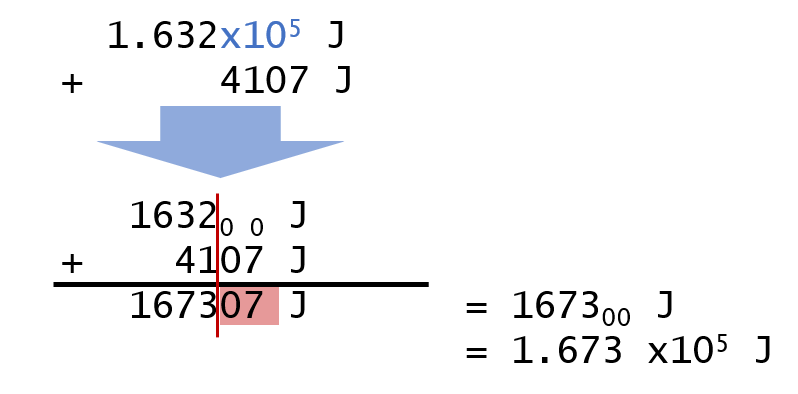When adding or subtracting numbers, round the result to match the input value with the least absolute precision. In most cases, this will be the least number of decimal places in the input values.

In the example above, we see that since 4.383 is less precise – it has only three numbers after the decimal (ending in the thousandths place) – we should also round our final answer to three decimal places (ending in the thousandths place), cutting off the red-highlighted, insignificant, digits. Aligning our numbers so the decimal points line up helps see this more clearly.

In this example, the two digits past the decimal place are rounded and not recorded in the answer because 486 (our least precise input value) has no digits past the decimal place. Notice that our answer has 4 significant figures total, while our input values had 3 and 5 significant figures, respectively. The TOTAL NUMBER of significant figures often changes from the input values to the final answer when adding or subtracting.

In this example, we also change the total number of significant figures from input to final answer, cutting our final value to two decimal places to match 56.14.
For very large or very small values, it may be helpful to use scientific notation (make sure all values are expressed to the same power, even if this makes “improper” scientific notation).
Here, we first have to get the two input values into the same format (and same power in the scientific notation):

Written in another way, we can see one other detail in this example: the least precise number sometimes ends before the decimal place.

Here, 1.632×105 ends in the hundreds place, while 4107 ends in the ones. Since a hundred is larger than one (and therefore less precise), we must cut our final answer in the hundreds place as well. This formatting requires us to include some non-significant zeroes to write the numbers without scientific notation.